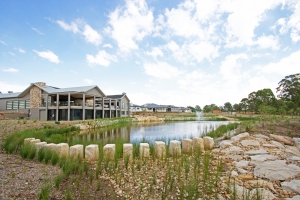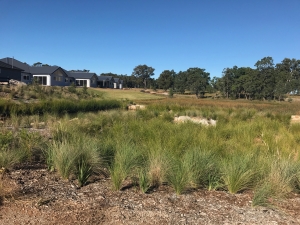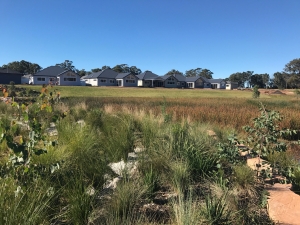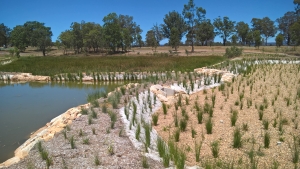Australian Wetlands Consulting & Pricewaterhouse Cooper, Greater West Landscapes and Northrop Consulting Engineers
Kirkham Rise Estate Integrated Stormwater Strategy
Kirkham Estate in the rapid growth area of western Sydney required a stormwater treatment strategy. Early strategy development incorporated a traditional approach to management of stormwater on the site. However, the multi-disciplinary team worked collaboratively to utilise existing site features and develop an integrated strategy that allowed for significant cost savings and improvement to community engagement opportunities and local ecology.
The development of the stormwater treatment strategy focussed on utilising the landform features, local ecology and enhancing an existing farm dam with established aquatic ecosystems. The farm dam represented a significant site asset that through the integration with stormwater treatment and community aesthetics could provide for a multitude of functions including community education, passive and active recreation and stormwater treatment, detention and reuse through irrigation onto surrounding parklands
The relationship between the stormwater treatment elements of the strategy including a bioretention system demonstrates that evolving designs in landscaping and stormwater can be sympathetic to each other and allow for the creation of a community asset that facilitates engagement with the natural environment.
The design incorporated an existing farm dam greater than 70 years old and focused on creating an attractive public space with opportunities for passive recreation and amenity. The stormwater design includes a formal pond integrated with a community centre which enables stormwater harvest and reuse, and an existing farm dam with very high ecological values which is used for flood detention and as a key landscape feature for the estate.
Both devices have multiple viewing points and a walking/biking trail included, as well as extensive revegetation and ecological restoration works.
The development discharges into sensitive remnant Cumberland Plain Woodland vegetation, a critically endangered ecological community – and ultimately into the Nepean River. There is an imperative to intercept stormwater to maintain the pre-development hydrological regime and prevent nutrients from impacting on the important local vegetation communities.
 |
 |
 |
 |




